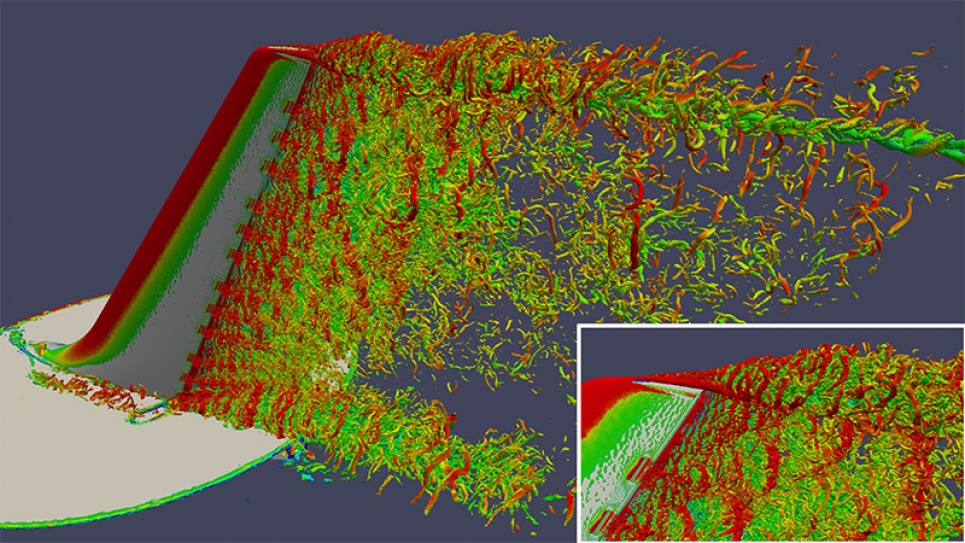
Adaptive Detached Eddy Simulation of a High-Lift Wing with Active Flow Control
This project is focused on performing simulations of active flow control on a realistic, high-lift wing configuration that includes a leading-edge slat, a main wing, and a trailing-edge flap. Specifically, researchers propose to model an array of synthetic jets that have been vectored to enhance the streamwise momentum near the flap suction peak, limiting flap effectiveness for high angles of attack.
The selection of a high-lift wing assembly is based on a number of factors, including the dramatic energy savings a flow-control-based redesign of aeronautical control surfaces would provide. With active flow control, the required force can be created using a smaller and lighter control surface--which can include flaps, elevators, or even rudders--on a vertical tail.
The numerical simulations proposed will provide a complementary and detailed view of the flow interactions and, in turn, give the insight required to understand and exploit the underlying physical mechanisms related to active flow control. The proposed modeling approach was validated previously against coordinated, simultaneous experiments on a full 3D-wing geometry, which is a natural stepping stone for the high-lift wing. The numerical predictions were found to be in excellent agreement with the experimental measurements.
The computational approach used for these simulations is the finite-element-based flow solver, PHASTA, employed with anisotropic adaptive meshing and partitioning procedures. PHASTA will demonstrate that robust, open-source software, applicable to a very broad range of flow physics, can sustain high-petaflop performance. While it has been applied to active flow control on more fundamental aerodynamic configurations, this effort marks the most fundamental aerodynamic study yet attempted.